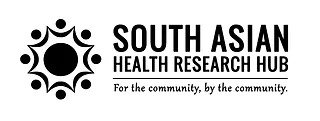South Asian Adolescent Diabetes Awareness Program (SAADAP)
Asian countries (including India, Sri Lanka, Pakistan, Nepal and Bangladesh) are at increased risk for developing Type 2 Diabetes compared to people from other parts of the world. Additionally, the risk for developing diabetes increases even more if there is family history of diabetes. This means that South Asian teenagers who have a family history of diabetes (for example, their parent or sibling has Type 2 Diabetes) are a high risk group.
Without proper management of risk factors (things that can increase/decrease risk), while they are young, these teenagers are more likely to grow up and also develop diabetes. The goal of the SAADAP is to teach South Asian teens with a family history of diabetes everything they need to know about the disease so that they can build healthy habits as they get older and move into adulthood. We want to give these teens the tools and information they need to make healthy choices for a diabetes-free future. The SAADAP is a pilot program that ran for the very first time with a group of teenagers in the Peel Region. We collected research throughout the program to determine if our approach is effective, and what needs to be changed to make it better.
The South Asian Adolescent Diabetes Awareness Program (SAADAP) provided 80 South Asian adolescents in the Peel Region of Ontario, Canada, an opportunity to participate in the South Asian Adolescent Diabetes Awareness Program.
This was a pilot intervention aiming to provide diabetes prevention knowledge, resources and tools to youth with a family history of type 2 diabetes. A subset of these participants went on to also participate in the second phase of the study, for a PhotoVoice project. In a series of workshops, the participants were given photography training and were also introduced to the concept of the Socio-Ecological Model. They learned about the wide range of individual, interpersonal, organizational, community and policy-level factors that impact one's health and well-being. Participants engaged in a qualitative PhotoVoice study, where they took photographs to capture and comment on various factors from the Socio-Ecological model that impact their diabetes prevention efforts in their day-to-day lives.
Meet the Members of the Youth Health Awareness Council
Amina Khokhar
Anjali Bhurji
Nabiha Malik
Angelie Senanan
Manal Malik
Eiman Alam
Sanya Sharma
Rhea Gupta
Jasleen Wassan
